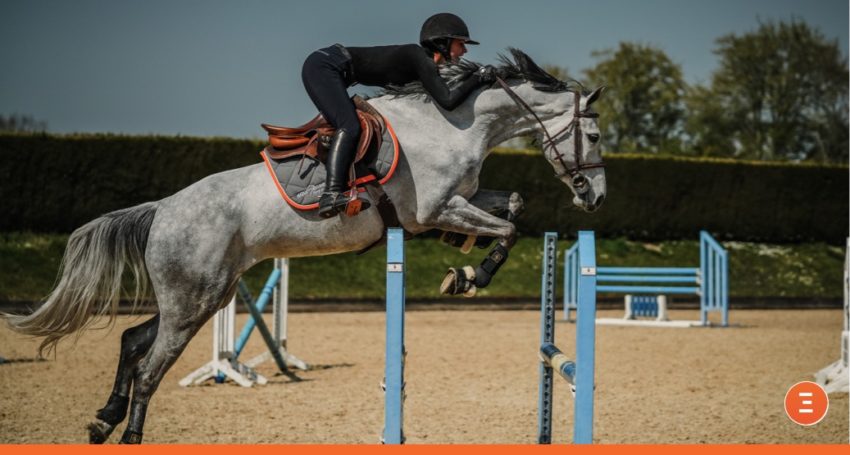
6 Exercises to Prepare for a Jump-Off
If we work very often on the technique when jumping, we work very little on the jump-off itself. However, one cannot imagine winning a championship without being perfectly prepared for the final. We have therefore concocted 6 exercises to prepare for a jump-off and thus succeed in your upcoming finals.
Table des matières
The 4 main goals for preparing a jump-off
To prepare a jump-off, you must know how to:
- Be perfectly in control (speed, rhythm, amplitude).
- Turn short
- Jump at an angle
- Jump to the side
The 6 exercises that follow are therefore oriented around these goals.
All of these exercises, as well as a complete program on the jump-off, are available on our mobile app. It’s free and you can use it even if you don’t have the Equisense Motion Sport Sensor

Let’s get to it!
Exercise #1 – The Vicious Circle
The objective of this exercise is to give you control no matter the conditions, even in a forward canter.
Here’s how to perform the exercise:
- Canter on a 20m circle
- Start by doing 3 strides at right shoulder-fore. It will work on your horse’s leg response, flexibility and engagement.
- Then, follow with 3 strides in counter flexion. The idea is always to have a supple, responsive and balanced horse.
- Straighten your horse for 3 strides.
- Release your hands forward for 3 strides, your horse must maintain their balance and gait.
- Get your contact back and increase your canter speed. So look for a more sustained canter and repeat the exercise on this more sustained canter.
As you go along, you will have to do these movements in a more and more sustained canter, maybe even very extended. You will have to keep your suppleness and tonicity without letting yourself be overwhelmed by this extended canter. And your horse will have to remain supple, balanced and focused on your aids, despite the speed.
Remember to do this exercise on both reins.
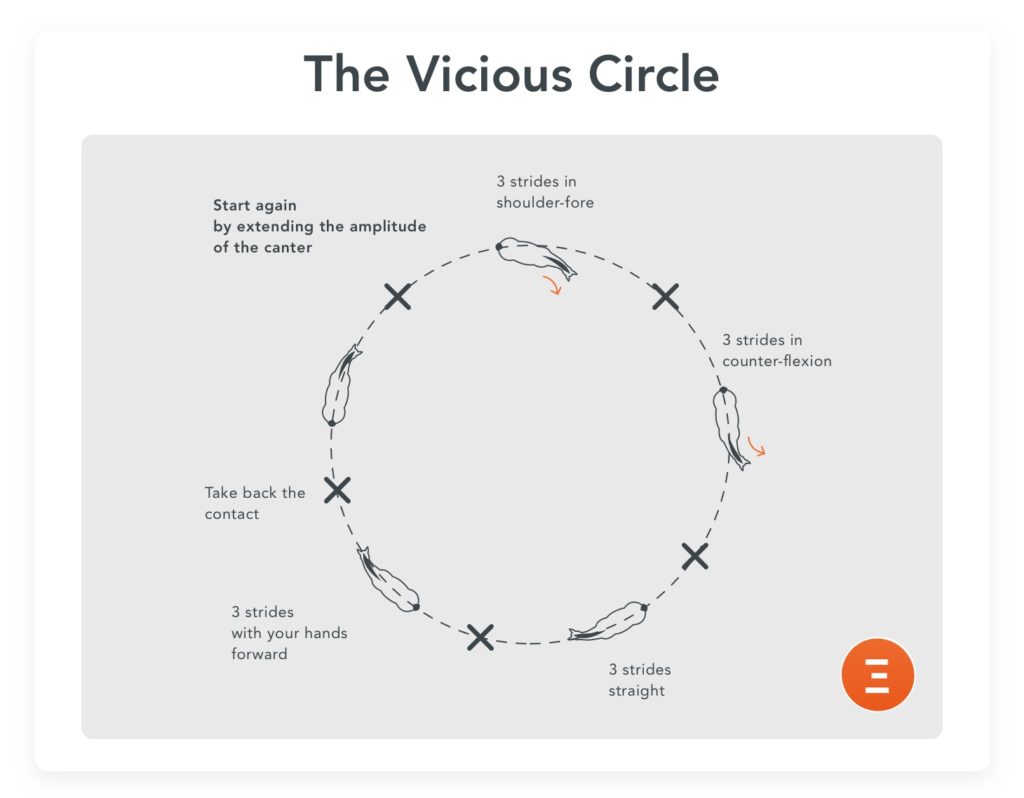
On the same topic 📚 : 5 Exercises for a Horse Rushing Jumps
Exercise #2 – Vary your amplitude in a line
This second exercise is to gain control in a straight line. To prepare for a jump-off you must be able to vary the amplitude of your canter to be able to add or remove a stride between 2 fences. Therefore, that’s where this exercise comes in.
Set up a line of 3 fences at a small height (each 20m apart or 16m depending on the size of the arena). The idea is that you can make mistakes without any big consequences.
The exercise consists of:
- First, doing the two lines in 5 strides then vary the amplitude by doing 4 and 4 strides then 6 and 6.
- Finally, vary the stride lines by doing either 5 and 4, 5 and 6, 4 and 5, 4 and 6 (very hard) or 6 and 4.
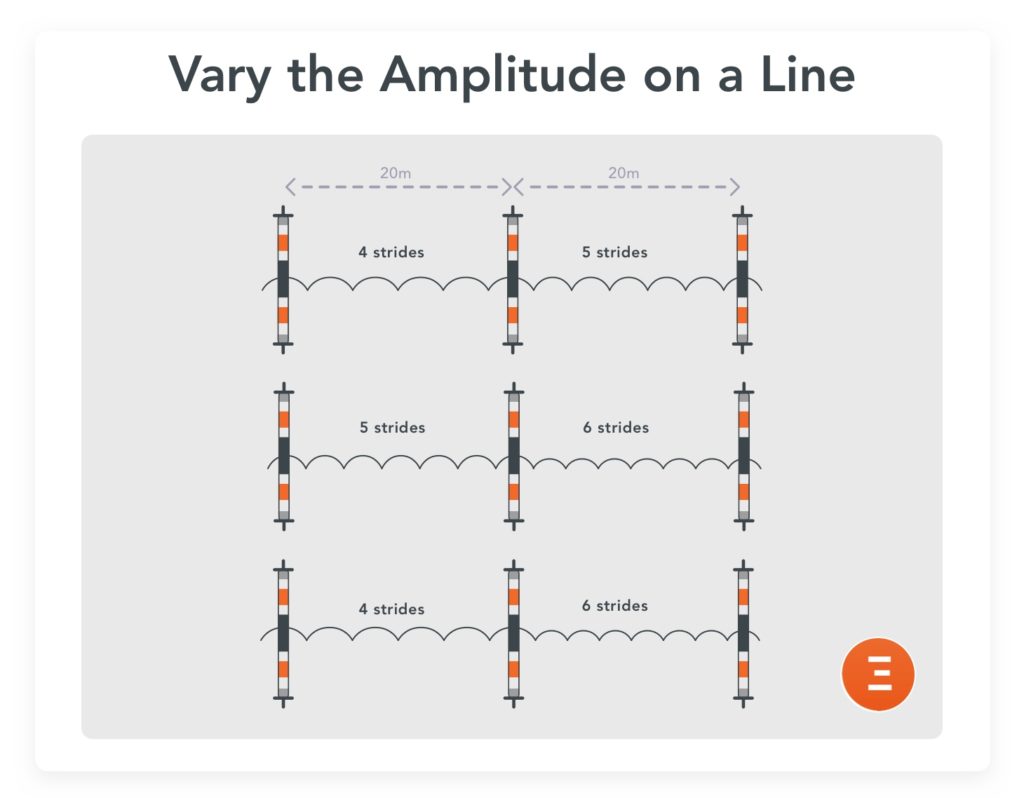
Be careful and try not to use your hands to shorten the strides, use your shoulders and back. Also, prepare well your approach to arrive in ideal conditions to jump the fence.
Variation to Start
You can start with ground poles first to ensure you have a good foundational understanding of the exercise before jump higher obstacles.
Read as well 📚 : 4 Jumping Course Ideas to do in an Indoor Arena
Exercise #3 – Tight Turns
This exercise relates to our second objective: knowing how to make tight turns. To prepare for a jump-off, you will have to make very tight, “hairpin turns”, so you have to be prepared!
You can even increase the level by extending the gait while making the turn. You will have to manage the amplitude in the extension, come back to a shorter canter before the half turn, do the turn circle while maintaining the balance of the horse, then extend again at the exit and follow with increasingly tight half turns.
Do not hesitate to use poles or studs to materialize the half circles.
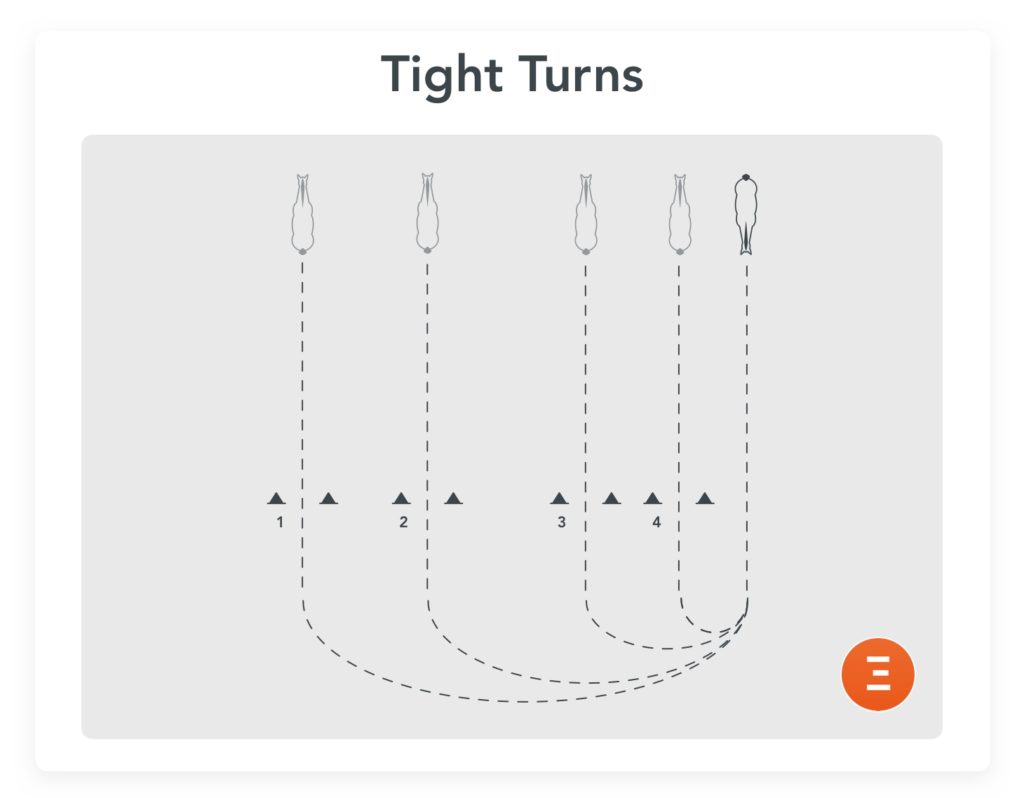
Be very demanding in this exercise. The idea is to make perfect turns, with a horse perfectly in command and perfectly balanced.
Exercise #4 – Jump in a Square
This exercise mixes up the first two objectives: gaining control and tight turns.
During a jump-off, you will sometimes have to make right-angle turns just before a jump. This exercise will prepare you for it.
Put 4 jumps on a square of about 16 to 20m. Start by linking the obstacles together by making quarter circles. As you continue to go through the exercise, focus more and more on the corners until you make perfect right angles between the obstacles. You can use studs to mark the points where you should turn if you want to be more precise.
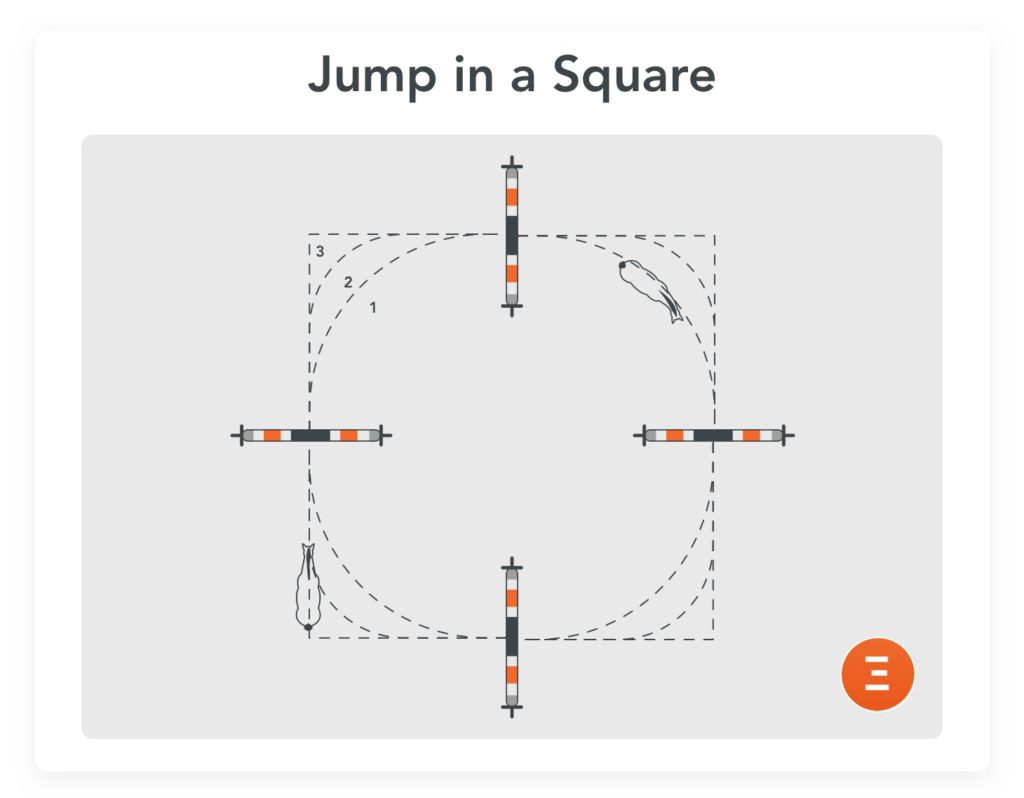
Laurie, a Hunter rider, has taken the time to show you :
Exercice #5 – Diagonal Jumps
Third goal: Jump at an angle.
It is common to have to jump at an angle when you are in competition because of the line you may have to take, saying that, it is advisable to practise for this situation!
I suggest this exercise: diagonal jumps. Indeed, it is a very good exercise to prepare for a jump-off round. It is in fact 3 obstacles which are offset from one another. Therefore, approach it from an angle and jump the 3 (or 4 or 5 …) obstacles at an angle. The more the obstacles are offset, the greater the angle will be. Increase it as you go!
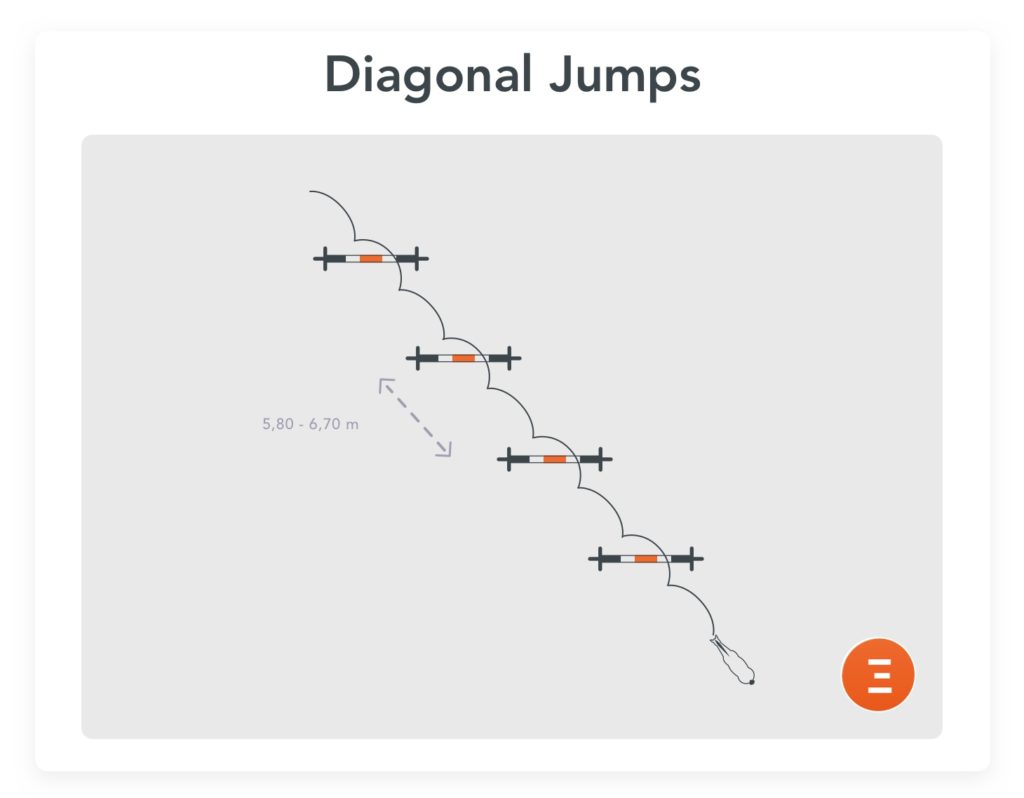
Exercise #6 – Angles
This exercise mixes the last two goals: jumping at a diagonal, and on the side
Use a small block or stud with 2 poles fanning out on the side to set up the exercise.
The idea is to approach this jump in different ways:
- First on the narrower, left side, perpendicular to the forefront. It will force you to come and jump on the side and it is less impressive for the horse.
- Then coming to the middle, still perpendicular to the forefront. This will require you to be very straight on your approach and your horse will have to make a little more effort as the jump is becoming wider.
- You will then approach the jump on its widest side, this time perpendicular to the background. The angle will be important and you will jump on the side. Be vigilant and present so that your horse does not slip to the right!
- Once you have completed all 3 angles, you can start to vary the distance between the 2 poles, start with a 4m gap and then you can make it wider as you go.
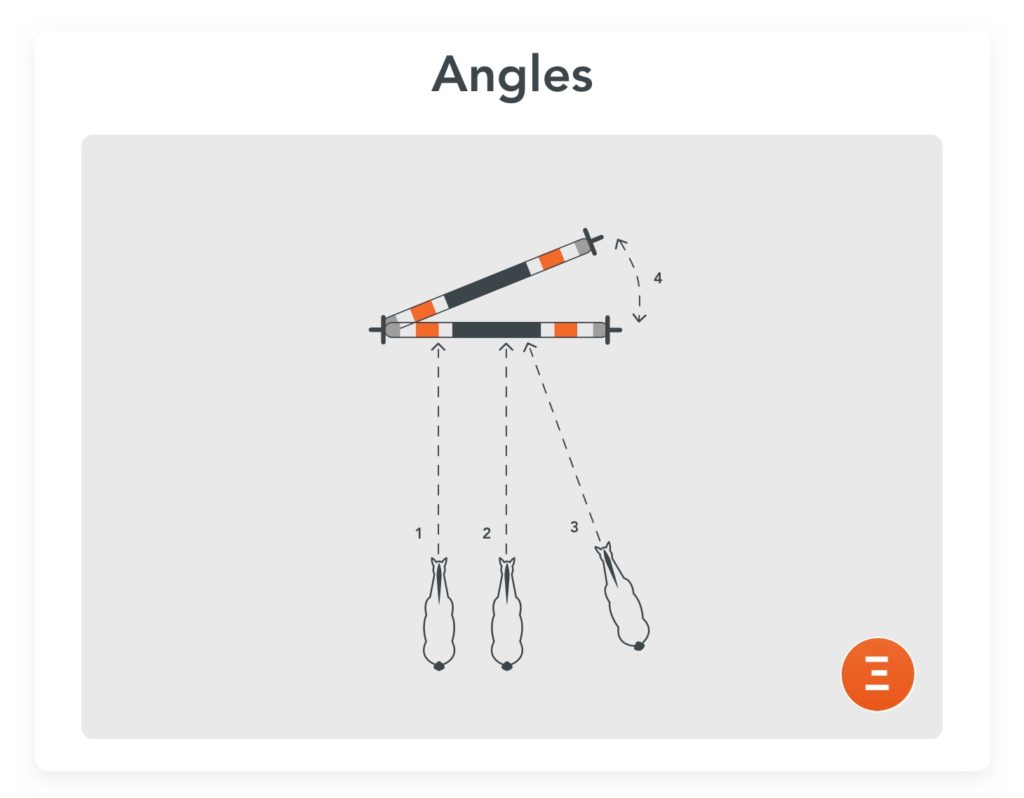
Use the Butterfly method of Luciana Diniz to work the jump-off
The Butterfly exercise, from Luciana Diniz, Olympic show jumping rider, will also be a very good exercise to work the jump-off. In addition to the technical interests of the exercise, it requires preparation and anticipation. This mental preparation will be very useful the day you will be in real jump-off conditions!
Discover the secrets of this method through a masterclass realized in partnership with Equisense:
We hope to see many of you out at competition proudly wearing your Equisense colors!
See you soon and good luck,
Camille Saute
R&D Manager at Equisense